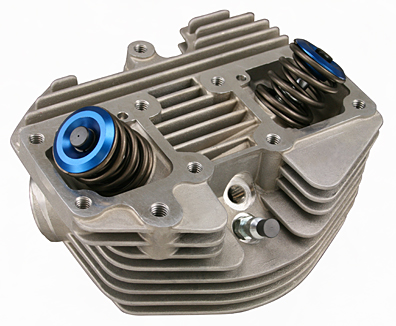Given the original heads were crude as they could be like most sand cast parts of the era (HD was no MV Agusta or BMW airhead) and the simplicity of the head design why not check a set out? There isn't some secret sauce to casting such basic parts in the modern world.
I'm ordering repop heads for my Pan and per Dragstews sensible advice replacing the valve springs since the usual place to cut quality where no one can see it is using inferior steel. Bike parts tend to have boat-style ripoff markups and if ya do cars the comparison is interesting. Ya can buy aluminum V8 heads for about 550 each which have a LOT more alloy, hardware and machining than a dead simple Shovel repop. S&S management know they've a captive audience and per other posters some of their recent QC has been funky.
Post results to help the next guy.
The Ultima website is a triumph of poor web design.
The remarks on flow are interesting:
I'm ordering repop heads for my Pan and per Dragstews sensible advice replacing the valve springs since the usual place to cut quality where no one can see it is using inferior steel. Bike parts tend to have boat-style ripoff markups and if ya do cars the comparison is interesting. Ya can buy aluminum V8 heads for about 550 each which have a LOT more alloy, hardware and machining than a dead simple Shovel repop. S&S management know they've a captive audience and per other posters some of their recent QC has been funky.
Post results to help the next guy.
The Ultima website is a triumph of poor web design.
The remarks on flow are interesting:



Comment